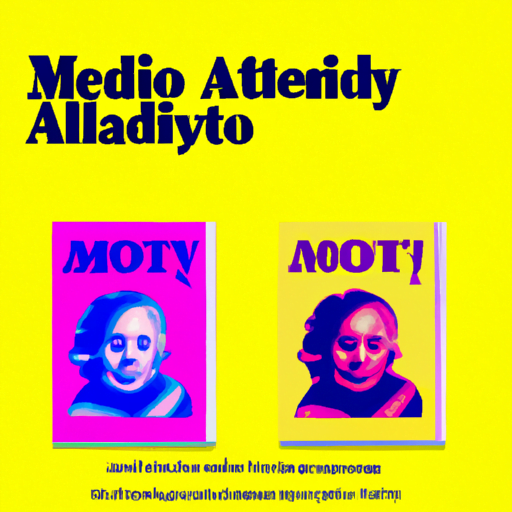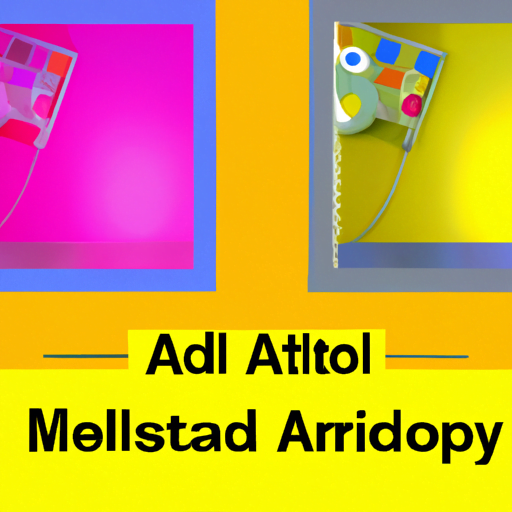
-
Table of Contents
- Designing for Different Print Media: Brochures, Flyers, and More
- The Importance of Print Media in the Digital Age
- Understanding the Purpose and Audience
- Design Principles for Print Media
- 1. Balance
- 2. Typography
- 3. Color
- 4. Images and Graphics
- Designing for Brochures
- 1. Define a Clear Hierarchy
- 2. Use Visuals Strategically
- 3. Keep it Concise
- Designing for Flyers
- 1. Create a Strong Visual Impact
- 2. Keep the Message Clear and Concise
- 3. Include Contact Information
Designing for Different Print Media: Brochures, Flyers, and More

Print media continues to be a powerful tool for businesses and organizations to communicate their message effectively. From brochures and flyers to posters and business cards, print materials play a crucial role in marketing and branding efforts. However, designing for different print media requires careful consideration of various factors to ensure the desired impact and engagement. In this article, we will explore the key elements and best practices for designing effective print materials, with a focus on brochures, flyers, and more.
The Importance of Print Media in the Digital Age
In an increasingly digital world, print media might seem outdated. However, research shows that print materials still hold significant value and influence. According to a study conducted by the Direct Marketing Association (DMA), 79% of consumers act on direct mail immediately, compared to only 45% who say the same about email. Print media offers a tangible and tactile experience that digital media cannot replicate, making it memorable and impactful.
Furthermore, print materials can complement digital marketing efforts by providing a physical touchpoint for potential customers. For example, a well-designed brochure can serve as a leave-behind after a sales meeting or trade show, reinforcing the brand message and keeping the business top-of-mind.
Understanding the Purpose and Audience
Before diving into the design process, it is crucial to understand the purpose and target audience of the print material. Different print media serve different purposes, and the design should align with the intended goal. For example, a brochure may aim to educate and inform, while a flyer may focus on grabbing attention and driving immediate action.
Additionally, understanding the target audience is essential for effective design. Consider factors such as age, gender, interests, and preferences. For instance, a brochure targeting millennials may require a more modern and visually appealing design, while a brochure targeting senior citizens may benefit from larger fonts and simpler layouts.
Design Principles for Print Media
When designing for print media, several design principles should be considered to create visually appealing and engaging materials. Let’s explore some of these principles:
1. Balance
Balance refers to the distribution of visual elements within a design. Achieving a balanced composition ensures that the design feels harmonious and visually pleasing. There are two types of balance: symmetrical and asymmetrical.
Symmetrical balance involves arranging elements equally on both sides of an imaginary central line. This creates a sense of stability and formality. Asymmetrical balance, on the other hand, involves arranging elements of different sizes and visual weights to create a balanced composition. This type of balance adds visual interest and dynamism to the design.
2. Typography
Typography plays a crucial role in print design, as it directly affects readability and visual impact. Choosing the right fonts and using them effectively can enhance the overall design. When selecting fonts, consider the brand personality and target audience. For example, a luxury brand may opt for elegant and sophisticated fonts, while a playful brand may choose more whimsical and fun fonts.
Additionally, pay attention to font sizes, line spacing, and hierarchy. Ensure that the text is legible and easy to read, even from a distance. Use font sizes and styles to create visual hierarchy, guiding the reader’s attention to the most important information.
3. Color
Color is a powerful tool in print design, evoking emotions and setting the tone for the message. When choosing colors, consider the brand identity and the desired emotional response from the audience. Different colors have different psychological associations. For example, blue is often associated with trust and reliability, while red can evoke excitement and urgency.
Use colors strategically to create contrast and highlight important elements. However, be mindful of color combinations and ensure that they are visually pleasing and accessible for all readers, including those with color vision deficiencies.
4. Images and Graphics
Images and graphics can significantly enhance the visual appeal and effectiveness of print materials. High-quality and relevant visuals can capture attention and convey information more effectively than text alone. When selecting images, consider the resolution, composition, and relevance to the message.
Additionally, consider the use of infographics and illustrations to simplify complex information and make it more digestible. Visual representations can help engage the audience and improve comprehension.
Designing for Brochures
Brochures are versatile print materials that can be used for various purposes, such as product showcases, event promotions, or company profiles. Designing an effective brochure requires careful consideration of layout, content organization, and visual elements.
1. Define a Clear Hierarchy
A well-designed brochure should guide the reader’s attention and make it easy to navigate through the content. Establish a clear hierarchy by using headings, subheadings, and different font sizes to differentiate sections. This helps the reader quickly identify the most important information and navigate through the brochure effortlessly.
2. Use Visuals Strategically
Visuals play a crucial role in brochures, as they can convey information more effectively than text alone. Use high-quality images and graphics that are relevant to the content. Consider using infographics to present data or complex information in a visually appealing and easy-to-understand format.
3. Keep it Concise
Brochures are meant to provide a snapshot of information, so it is essential to keep the content concise and focused. Avoid overwhelming the reader with excessive text. Instead, use bullet points, short paragraphs, and impactful headlines to convey the key messages effectively.
Designing for Flyers
Flyers are typically used for short-term promotions, events, or announcements. They need to grab attention quickly and convey the message concisely. Here are some design tips for creating effective flyers:
1. Create a Strong Visual Impact
Flyers are often distributed in high-traffic areas, so it is crucial to create a strong visual impact to grab attention. Use bold colors, striking images, or eye-catching typography to make the flyer stand out. However, ensure that the design remains cohesive and aligned with the brand identity.
2. Keep the Message Clear and Concise
Since flyers have limited space, it is essential to keep the message clear and concise. Use short and impactful headlines to grab attention, and support them with minimal text. Focus on the key benefits or call-to-action to drive immediate action.
3. Include Contact Information
Make it easy for potential customers to get in touch by including contact information on the flyer. This can be in the form of a phone number, email address, or website URL. Ensure that the contact information is legible and stands out from the rest of the design.
